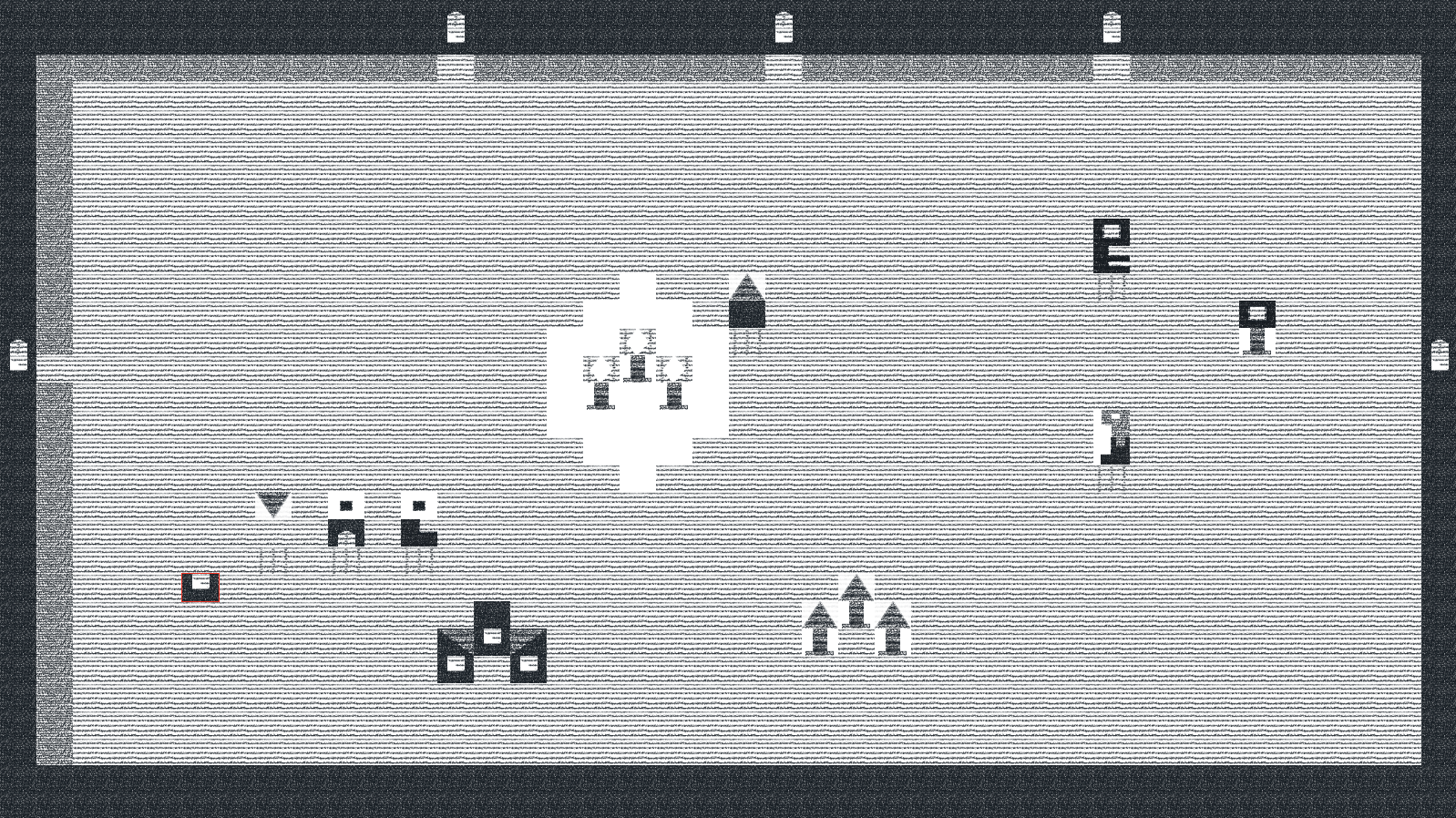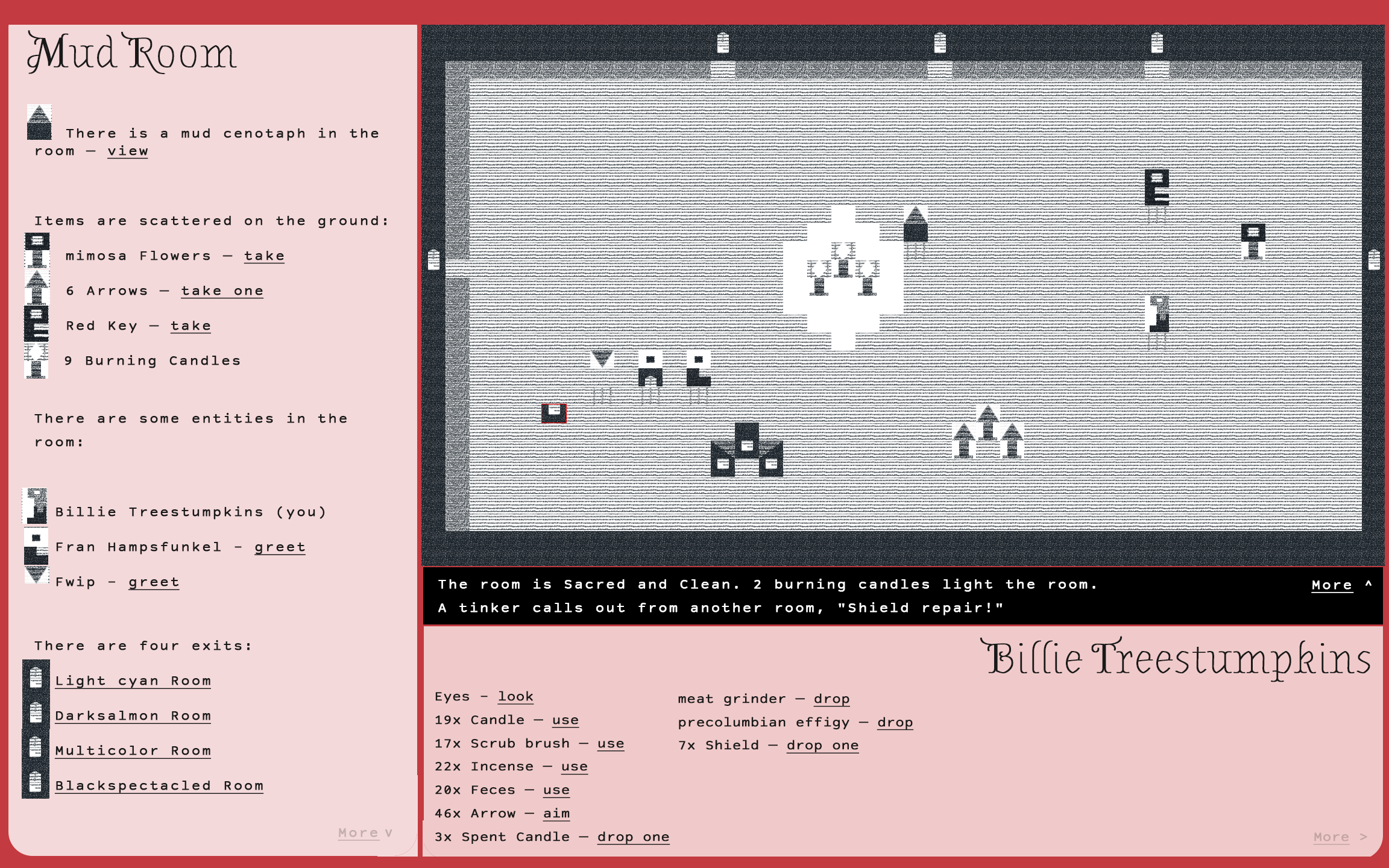Today was a first planning meeting to resume development on Grotto, and start the big project– the one I’m now calling Phantom Homeland (I got a good laugh out of calling it Dusičky for a little while, but come on).
I think the big takeaway from the show was one that should’ve been obvious from the start– that the GUI view, which was based on the Atari 2600 game swordquest, is illegible to most players without a lot of handholding.
I started a little javascript tool (with generous help from Ariel) that would be both a tile-based paint and animation tool, and also possibly the beginning of a canvas-based graphics output for the game. I imagine a window that could show both a top-down view of a room with two-tile icons for items and characters and exits, and then when events happen, the canvas would load animation files to play back cutscenes- also rendered with the tilemap.

With this graphical output in play, I am imagining something more like a roguelike ui- a top-down grid-based map area, to the left a map-key list of the objects in view with their attached verbs. Below the map canvas is a text output for the room description and for text messages and alerts. Viewing an item would open a modal or replace the canvas div with a description.
 (the shittiest possible photoshop layout mockup)
(the shittiest possible photoshop layout mockup)
Item descriptions which were previously not accessible are now viewable with an “eyes” item, a multi-mode item that works like the arrows item does now- it has a “look” verb, that then changes all described items verbs to “view”.
![]()
Here’s why this is important-
The other major problem with the demo was that the prime mechanic of bringing items into a room to unlock Cenotaph descriptions wasn’t very good. It was too difficult for people to find the items in the maze and then less likely that they would carry out this fetch quest and read the unlocked text.
It also just didn’t make much sense in the game world. What was happening exactly?
I now have a much clearer idea of what is happening in the game world, who the actors are, what their intentions are for the player, and gradually I am getting ideas about what player goals might be.
Here’s the new model-
I like how in Souls games the lore is expressed in item descriptions. Now I think that cenotaph inscriptions are the dry, official obituary view of history, and that described items are evidence of a counterhistory. The lore dump that was previously unlocked in the cenotaph itself lives in the open in the description of an item that connects to the life of the deceased person represented by the cenotaph.
Items get rich descriptions now- they can contain audio clips, images, 3d models, pdf’s. Files are linked offsite but descriptions are just html that can contain all this rich media. In the world of the game we start to see a conflict between history and memory, and there could begin to be a push and pull of power. I jotted down a new intro–
No biological life survived the great wars, but some nevertheless declared themselves victors. They created Archive, the great arcology of heaven, to preserve their boastful histories. These records were enshrined forever in digital cenotaphs, atomic powered, viciously defended. Always the forces of subversion, even in death as digital ghosts, sought the redescription of those histories as a final revolution in the great cemetery of earth– But they were eternally routed and suppressed by power. That power drives them deeper– beneath the towering arcology, into the subterranean oubliettes and worm-caverns of the forgotten footpaths of peasants. Uncontested records less important than the posturing of kings, a place to gather trash to tell the stories of those who no longer have mouths with which to speak.
Welcome to the agent manifestation chambers of Archive. Please answer a few questions to assist in character creation.
I also started imagining a project for my fall group show that continues to scaffold towards the big project- this would be a prototyping of a combat system that would work in the game, a very simple, mostly for show system that lets me do more randomized text, test out the animation system and output, and allows for a first attempt at retreiving information from gedcom files- this prototype would pick random ancestors and have them fight in a zero-player mode that would be acceptible for two-screen gallery piece.
I’ll admit to a little bit of depression after my show- “Nobody gets what I am doing but Paul! Nobody cares!” but I am finding myself suddenly re-engaged and full of ideas as new ways of working that seem suddenly obvious begin to suggest themselves. I’ve been inspired both by reading that I’m doing and work I’ve been doing in an information studies archives class that I took on a whim.